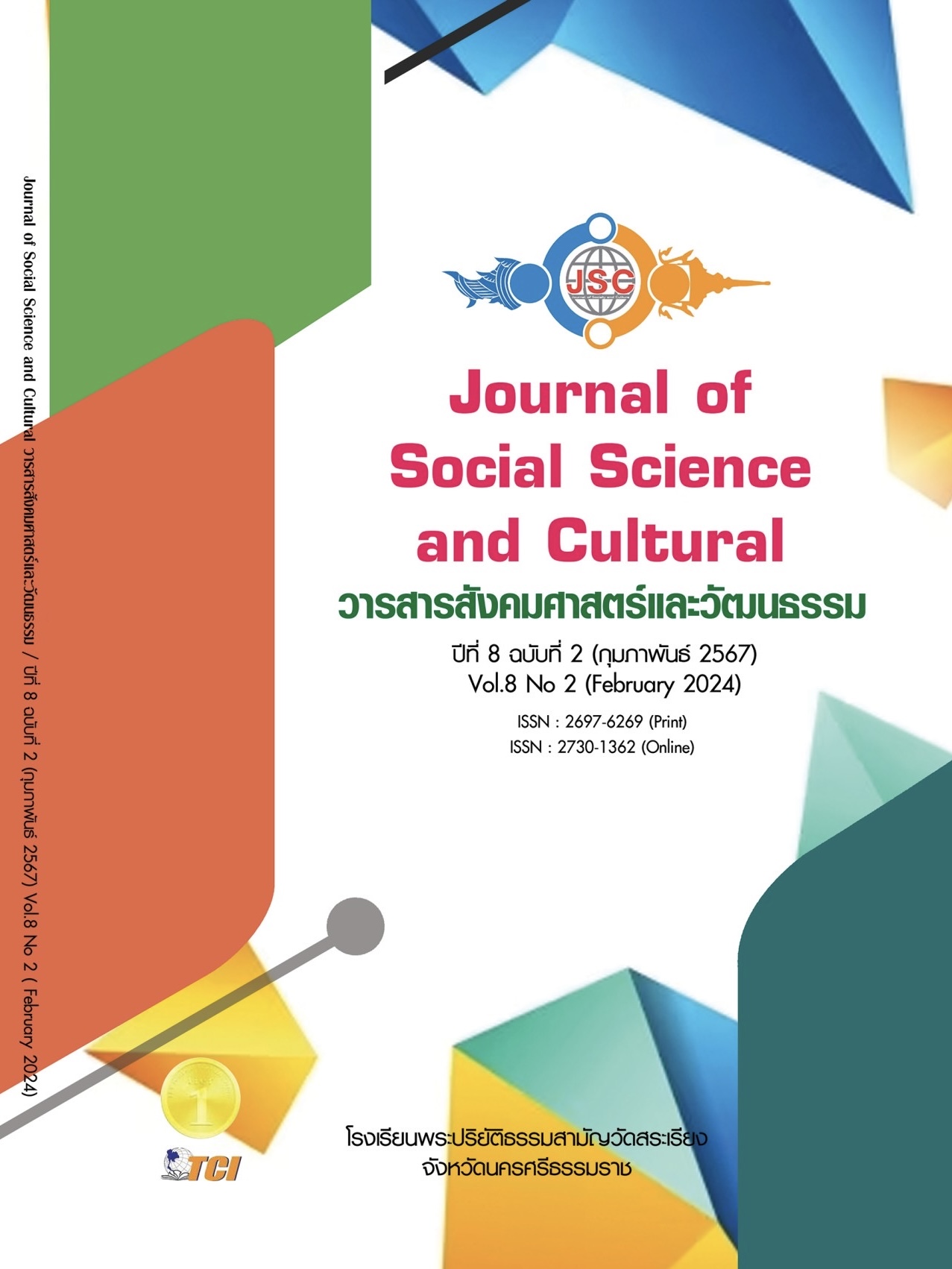DEVELOPMENT OF INNOVATION TRAINING TO ENHANCE COLLABORATIVE SKILLS IN THE CRISIS SITUATION OF DEPARTMENT OF HEALTH SERVICE SUPPORT UNDER MINISTRY OF PUBLIC HEALTH
Main Article Content
Abstract
The objectives of this research were to study; 1) Problems and needs in the development of collaborative skills training innovations. 2) Develop innovation of collaboration skills training. 3) Evaluate the use of innovative training in crisis collaboration skills for Department of Health Service Support personnel. This was research and development through mixed methods. Use in-depth interviews and questionnaires. Target group and population are human capital development, executive human capital developers, lecturers, and personnel under the engineering division receive training through online media. Qualitative data was analyzed by content analysis and descriptive analysis method. Quantitative data was analyzed by mode, percentage, mean, standard deviation, priorities need index and independent t-test. The results showed; 1) Problem conditions include systematic problems, behavioral problems, and technology while, priority needs include the need to use online technology, a variety of activities, build unity, fun and knowledge, it doesn't take much time and use activities to create learning engaging, and easy. 2) Training innovation are online team building activity and online walk rally activity. Both activities are appropriate, feasible, useful, and correct to the greatest extent possible. Conducting training activities with innovative crisis collaboration skills training on 18-19 August 2023 through online media channels. 3) Collaborative efficiency of personnel of the Department of Health Service Support Before and after participating in the training activities, there was a significant difference at the .05 level.
Article Details
References
กฤติยา อินถา. (2558). รายงานผลการปฏิบัติราชการตามคำรับรองการปฏิบัติราชการ ของสำนักสารนิเทศและประชาสัมพันธ์. กรุงเทพมหานคร: กระทรวงสาธารณสุข.
ชาญ เพียรัม. (2561). การพัฒนาหลักสูตรฝึกอบรมเพื่อสร้างทักษะการทำงานเป็นทีม สำหรับนักเรียนอาชีวศึกษา วิทยาลัยกําปงเฌอเตียล จังหวัดกําปงธม. วารสารวิชาการมหาวิทยาลัยราชภัฏศรีสะเกษ, 12(1), 139-147.
ณฤดี เนตรโสภา และคณะ. (2561). การพัฒนารูปแบบการเรียนการสอนแบบผสมผสานเพื่อเสริมสร้างสัมมาทิฏฐิของนักเรียนมัธยมศึกษาตอนต้น ด้วยเทคนิคคําาถาม R-C-A. วารสารมหาวิทยาลัยราชภัฏยะลา, 12(2), 1-14.
ปรีดี นุกุลสมปรารถนา. (2563). การบริหารจัดการภาวะวิกฤต (Crisis Management). เรียกใช้เมื่อ 13 กรกฎาคม 2565 จาก https://www.popticles.com/business/crisis-management/
ปารวี สยัดพานิช. (2563). การสร้างทีมให้มีประสิทธิภาพ. เรียกใช้เมื่อ 20 กันยายน 2566 จาก https://www2. si.mahidol.ac.th/km/knowledgeassets/kmexperience/kmarticle/15325/
พัชรินทร์ คณิตชรางกูร. (2560). การพัฒนาทรัพยากรมนุษย์ของส านักทหารพัฒนา หน่วยบัญชาการทหารพัฒนา กองบัญชาการกองทัพไทย เพื่อรองรับการเปลี่ยนแปลงสู่ยุคไทยแลนด์ 4.0. ใน สารนิพนธ์รัฐศาสตรมหาบัณฑิต สาขาวิชาบริหารรัฐกิจและกิจการสาธารณะ. มหาวิทยาลัยธรรมศาสตร์.
วิจารณ์ พานิช. (2557). การสร้างการเรียนรู้สู่ศตวรรษที่ 21. (พิมพ์ครั้งที่ 2). กรุงเทพมหานคร: สำนักพิมพ์แห่งจุฬาลงกรณ์มหาวิทยาลัย.
สุภาพร โทบุตร. (2559). ปัจจัยการทำงานเป็นทีมที่ส่งผลต่อประสิทธิภาพในการปฏิบัติงานของบุคลากรภาครัฐในจังหวัดปราจีนบุรี. ใน วิทยานิพนธ์บริหารธุรกิจมหาบัณฑิต สาขาวิชาบริหารธุรกิจ. มหาวิทยาลัยรามคำแหง.
อภิวุฒิ พิมลแสงสุริยา. (2564). จาก VUCA สู่ BANI รู้ให้ทันโลกธุรกิจยุคไวรัส โหดร้ายไม่ต่างจากสมรภูมิสงคราม. เรียกใช้เมื่อ 20 กันยายน 2564 จาก https://www.smethailandclub.com/entrepreneur-7396-id.html
Burns, N & Grove, S.K. (2005). The Practice of Nursing Research. Conduct, Critique and Utilization. London: Elsevier Saunders Company.
Daria Maletis. (2024). Technology-Based Training for Older Employees: A Literature Review. In Thesis in University Honors and Psychology. Portland State University.
Long, R.K. . (2001). Seven Needless Sins of Crisis (Mis) management. PR Tactics, 14.
Sainte Anastasie. (2022). Informations générales. Retrieved December 28, 2023, from https://www.services.eaufrance.fr/commune/30228/2022
Siomkos. (1999). On achieving exoneration after a product safety industrial crisis. Journal of Business and Industrial Marketing, 14(1), 17-29.


